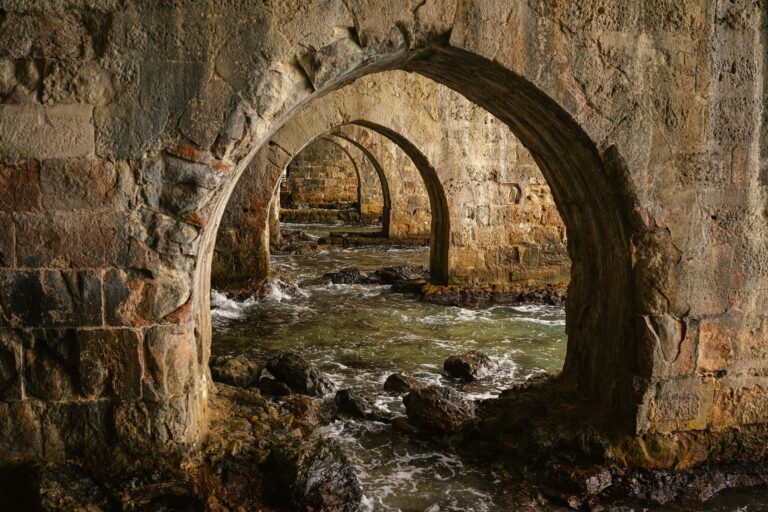Underwater construction plays a crucial role in developing and maintaining coastal and offshore structures. From building resilient coastal infrastructure to enabling energy projects offshore, the applications of underwater construction have become indispensable.
This article explores the methods, benefits, and impact of underwater construction in modern coastal and offshore development projects. Along the way, we’ll look at how cutting-edge techniques like the use of articulated concrete mats are shaping the industry.
Whether you’re curious about coastal construction projects or seeking insight into offshore infrastructure solutions, this guide will help you understand how underwater construction is redefining what’s possible beneath the surface.
The Importance of Underwater Construction
Supporting Global Coastal Development
Coastal areas are hubs of human activity, home to bustling cities, industries, and key ecosystems. To sustain these areas, underwater construction strengthens coastal lines, provides flood protection, and mitigates the effects of erosion.
Some examples of effective coastal development include seawalls, breakwaters, and artificial reefs. All these require precise underwater engineering to create well-designed coastal defenses while reducing environmental impact.
Enabling Offshore Engineering Projects
Offshore construction is vital for energy production, transportation, and communication systems. Offshore oil rigs, renewable wind farms, and underwater cables all necessitate robust underwater infrastructure.
Without underwater construction techniques, offshore infrastructure solutions like these would not be possible.
Common Methods in Underwater Construction
Cofferdams for Temporary Water Exclusion
Cofferdams are temporary structures designed to exclude water from a worksite. These waterproof barriers allow workers to construct parts of projects like bridges or docks in dry conditions.
Cofferdams are instrumental in ensuring precision and safety in challenging underwater settings.
Caissons for Permanent Structures
Caissons are large watertight retaining structures often used for the foundations of bridges and piers. They are sunk to the required depth and filled with concrete, providing a solid and stable base even in shifting underwater conditions.
Articulated Concrete Mats for Stability
When underwater durability is essential, articulated concrete mats are a game-changer.
These flexible solutions are laid over uneven seabeds to protect pipelines and cables or to stabilize shifting riverbeds. Their modular design ensures seamless integration with varying underwater environments.
Benefits of Underwater Construction
Environmental Adaptability
Underwater construction adeptly integrates environmental concerns with human development needs. Projects can preserve marine ecosystems by incorporating features like artificial reefs alongside industrial applications.
Enhanced Durability
Structures built underwater are designed to withstand extreme conditions, from strong tides to saltwater corrosion. Over-engineering such structures ensures longevity, reducing maintenance costs and long-term risks.
Unlocking New Potential for Offshore Infrastructure
With advancements in technology, underwater construction provides innovative offshore infrastructure solutions. From supporting clean energy projects to creating undersea transportation tunnels, the possibilities are growing exponentially.
Challenges in Underwater Construction
Managing Water Pressure and Access Issues
Working beneath the surface comes with unique challenges. High water pressure in deep-sea environments can compromise the structural integrity of equipment, and maintaining access to sites is often expensive and time-consuming.
Balancing Costs and Precision
Underwater construction projects often require a delicate balance between budgeting and ensuring precision. State-of-the-art materials and technologies are essential, but they can significantly increase overall costs.
Applications of Underwater Construction
Coastal Construction Projects
Coastal construction projects are broad in scope, from building ports and harbors to managing shorelines and wetlands. These projects involve a combination of erosion control methods, flood defenses, and public amenities.
Underwater building advantages and construction ensure these structures are resilient and functional, even under pressure from climate change.
Offshore Energy Projects
Underwater structures form the backbone of many energy projects.
Whether installing wind turbines for renewable energy or creating the foundations of offshore oil rigs, modern underwater engineering has made energy extraction and production feasible even in harsh marine environments.
Subsea Cable Laying
Telecommunication cables that connect continents rely on intricate underwater systems. Technical expertise in creating sturdy cable trenches and ensuring protection beneath the seabed guarantees uninterrupted communication around the globe.
Future Trends in Underwater Development
Integration of AI and Robotics
The use of AI and robotics is becoming essential in underwater construction.
Machines equipped with advanced sensors now assist with tasks like seabed surveying and construction monitoring, enhancing efficiency and safety. These technologies will likely become standard in underwater projects.
Growth of Eco-Friendly Materials
Sustainable materials are being prioritized to counteract environmental impacts.
Many companies are now utilizing biodegradable construction alternatives or recycled materials to mitigate the ecological footprint of underwater projects. This aligns with a global push toward greener construction practices.
Development of Smart Underwater Infrastructure
“Smart” underwater infrastructure equipped with monitoring devices is on the rise.
These systems provide real-time data on structural health, enabling prompt repairs and reducing risks. It’s an exciting leap forward in the management and maintenance of underwater projects.
How Underwater Construction Shapes Our World
Underwater construction is an inseparable part of our progress toward sustainable and resilient development. Articulated concrete mats, for instance, are just one example of the innovative tools transforming the way we approach challenging marine environments.
From enabling coastal construction projects to implementing offshore infrastructure solutions, advancements in underwater engineering shape the future of our urban and industrial landscapes.
Looking forward, the continued fusion of technology and expertise will further refine underwater construction techniques, pushing the limits of what’s possible below the surface.


